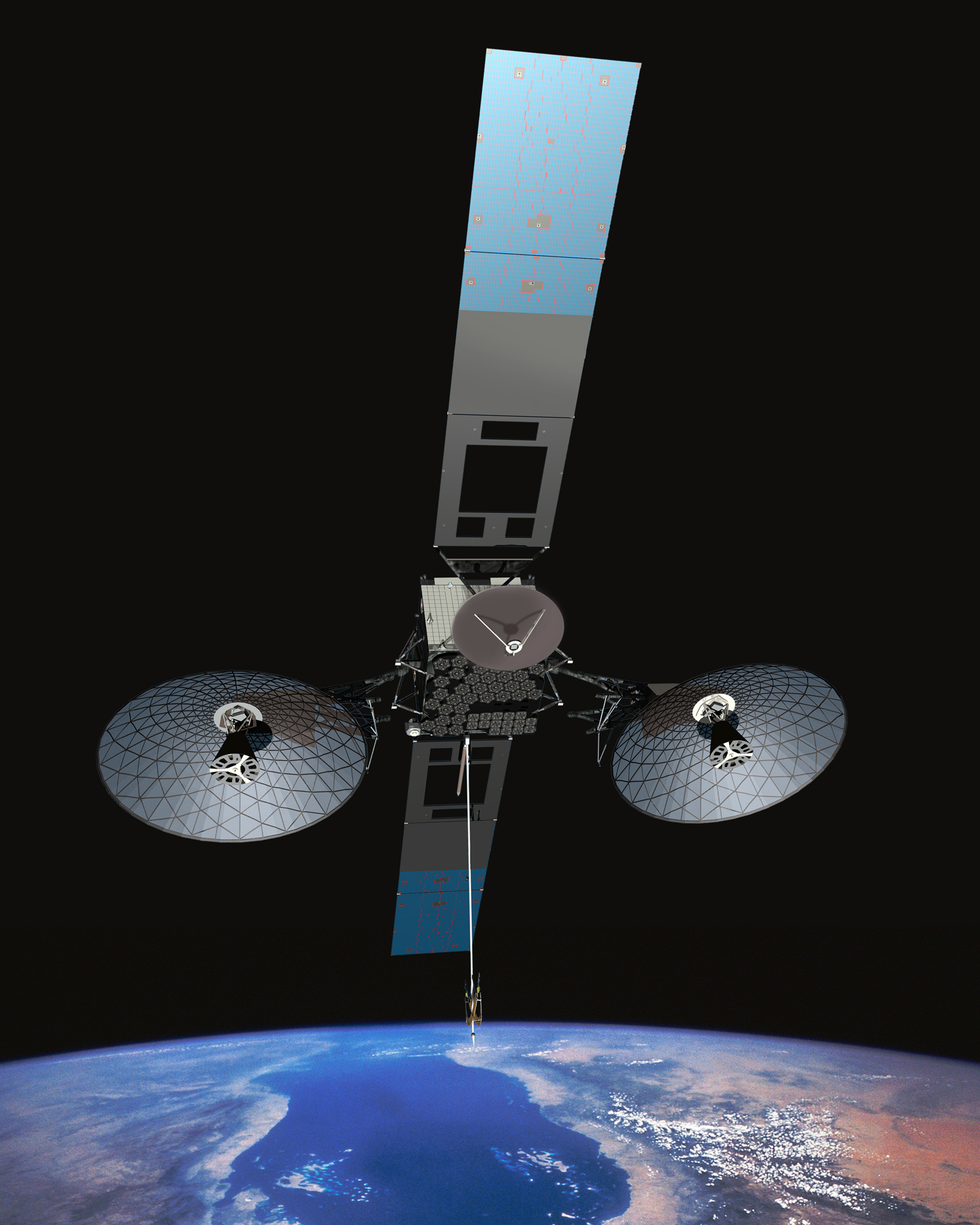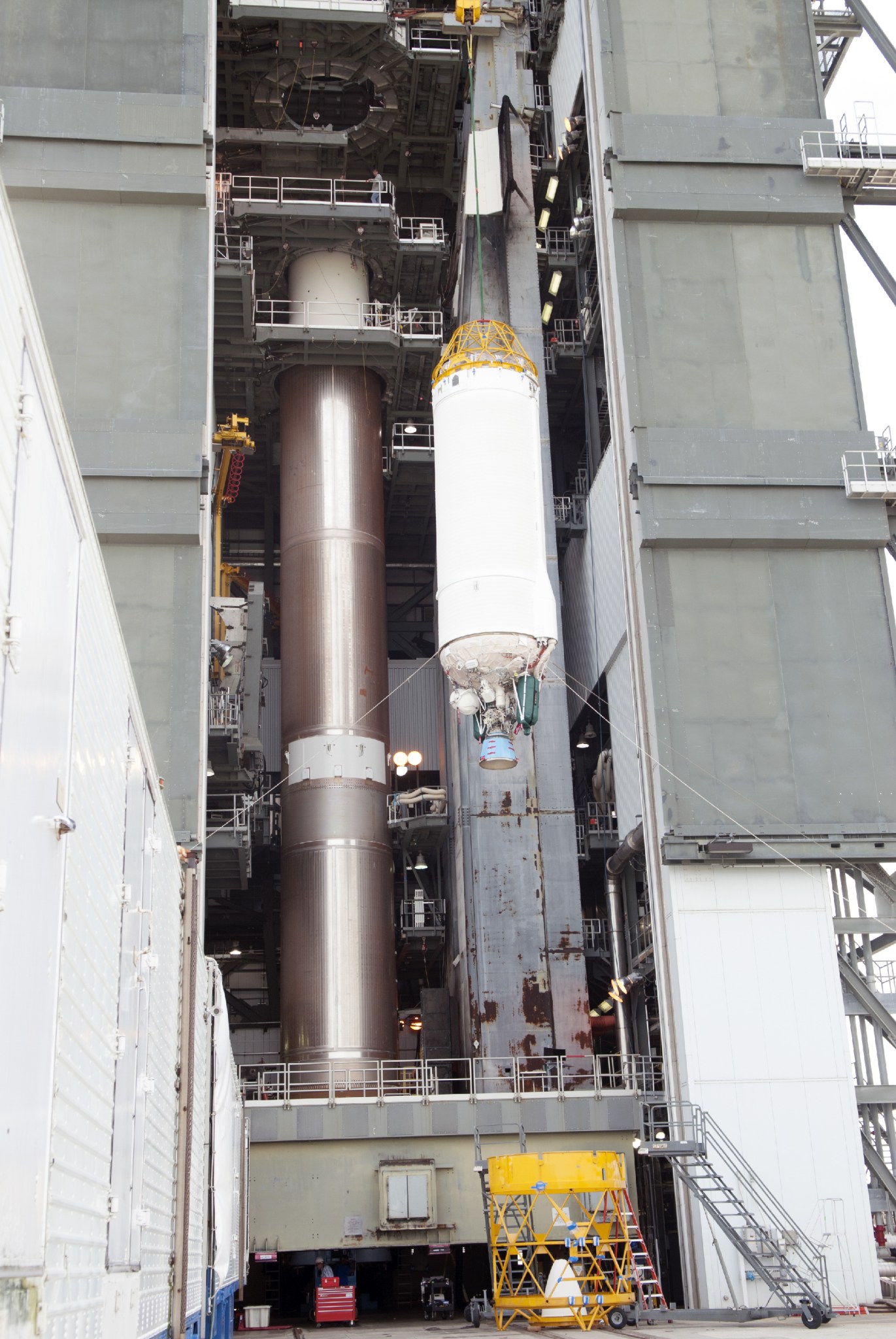The next element in the communications network that links NASA’s ground controllers to orbiting spacecraft is ready for launch Jan. 23 following several weeks of preparations.
TDRS-L will become the 11th member of the Tracking and Data Relay Satellite System orbiting Earth following its launch from Cape Canaveral Air Force Station in Florida aboard a United Launch Alliance Atlas V rocket. Liftoff is scheduled for Jan. 23 during a launch window that opens at 9:05 p.m. EST.
The constellation of satellites orbiting Earth at 22,300 miles revolutionized communications for the nation’s space agency by allowing nearly continuous transmission of information during a mission. Before the TDRS network was established, NASA relied on a patchwork of ground stations based around the world to stitch together coverage zones. Astronauts and Earth-orbiting scientific spacecraft would relay messages only when they passed over or near one of the ground stations.
Working in conjunction with the other TDRS satellites, TDRS-L will convey signals, information and commands from ground controllers to the International Space Station and NASA’s diverse assortment of scientific satellites including the Hubble Space Telescope.
“The TDRS constellation brings back all of the data and video that we see every day from the International Space Station,” said Tim Dunn, NASA launch director. “TDRS also supports all of the data from the Hubble Space Telescope and all of our low Earth orbit NASA science missions.”
The latest TDRS spacecraft is identical to one launched a year ago, TDRS-K. Both are the third generation of TDRS spacecraft and are part of a replenishment program for NASA’s Space Network overseen at the agency’s Goddard Spaceflight Center in Maryland.
The satellite arrived at Kennedy’s Shuttle Landing Facility inside an Air Force C-17 transport aircraft from its manufacturing plant in California. It was taken to the Astrotech payload processing facility in Titusville for numerous tests and was packed inside the two-piece payload fairing that will protect it during the climb into space.
“This one was pretty much fully assembled and ready to go,” said Diana Calero, NASA mission manager. “There were tests done since they wanted to make sure nothing happened on the shipment over from Los Angeles.”
The processing was aided by the fact that previous TDRS spacecraft had been put through the same regimen.
“Everything’s been going very smoothly with this because we had had the experience of TDRS-K so this has very smooth,” said Brett Perkins, launch site integration manager at Astrotech. “It’s fun when everything goes right and so far the flow has gone really smoothly. The fact that nothing has gone wrong with this flow took a lot of the stress out of it.”
The TDRS-L will ride into space on an Atlas V booster and Centaur upper stage, a combination that has become a workhorse for the agency’s recent missions. The Centaur, which takes over after the Atlas V booster’s stage has exhausted its fuel, will place the TDRS on a path to reach its 22,300-mile orbit.
The launch will come about 50 years after the first successful launch of a Centaur rocket. The stage was the first to use liquid hydrogen as a fuel in order to get higher performance. Working at Glenn Research Center in Ohio, engineers wrestled with the design of the stage and its RL-10 engine for several years before it worked right and they continued to modify and perfect the engine and its stage steadily over the years.
It helped launch NASA’s Surveyor spacecraft to land on the moon ahead of the Apollo astronauts in the 1960s and ’70s.
Thirty-feet-long and 10-feet in diameter and with two engines, the original Centaur has given way to a stretched version that is 41-feet-long with a single RL-10A engine producing more than 22,000 pounds of thrust. The stage also is being redesigned for possible use on spacecraft carrying humans into orbit.
For the TDRS-L spacecraft and the launch teams of NASA’s Launch Services Program and United Launch Alliance, launch day begins several hours before liftoff. They will fuel the two stages of the rocket remotely and follow a careful slate of tests and performance checks leading up to the launch.
“The last four minutes when you’re going into terminal count, you don’t have a whole lot of time, you don’t have time to stop and start doing things and troubleshooting,” Calero said. “Everyone’s staring at their data, your ear’s tuned to see if you hear anything and right as you go down to the final countdown and it lifts off, OK, now you made it through the count, that’s great. Then you’re listening to everything as it’s going up to make sure everything is nominal.”
It will take only a few minutes for the Atlas V to lift the TDRS-L clear of the lower atmosphere. After the Centaur’s first burn ends, it and TDRS-L will orbit Earth for more than an hour before the Centaur reignites to put the TDRS into what’s known as a geosynchronous transfer orbit. That means the spacecraft will follow a path out to 22,300 miles and then back to only a couple hundred miles and use its own thrusters to gradually make the orbit circular at the high altitude.
It will take about a month to check out all the systems on the communications satellite vast platform and then it will be formally handed over to NASA for use in the network.




























